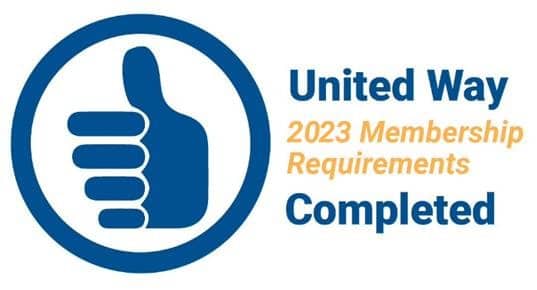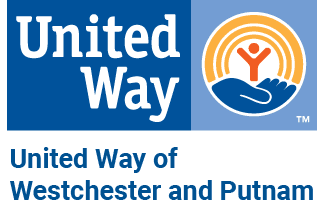Menu

Commonly Used Diversity, Equity, and Inclusion Terms
EQUITY Equity is the intentional inclusion of everyone in society. Equity is achieved when systemic, institutional and historical barriers based on race, gender, sexual orientation and other identities are dismantled and no longer determine socioeconomic, education and health outcomes.
INCLUSION A value and practice of ensuring that people feel they belong and that their input is valued by the whole (group, organization, society, system, etc.), particularly regarding decisions that affect their lives. DIVERSITY Each individual is unique and groups of individuals reflect multiple dimensions of difference, including race, ethnicity, gender, class, sexual orientation, age, physical abilities, religious beliefs, political beliefs and cognitive styles. RACE A socially constructed way of grouping people based on skin color and other apparent physical differences, which has no genetic or scientific basis. The concept was created and used by white people to justify the social and economic oppression of Blacks and other people of color. (See racism definition below for more details.) The ideology of race has become embedded in our identities, institutions and culture and is used as a basis for discrimination and domination. RACISM A system of oppression based on the socially constructed concept of race exercised by the dominant racial group (whites) over nondominant racial groups (Black, Indigenous and other people of color); a system of oppression created to justify social, political and economic hierarchy. The hierarchy was initially constructed with white people at the top and Black and Indigenous people at the bottom, with other people of color groups slotted in between. Racism can be understood as what happens at the intersection of race, prejudice and power. CLASS Relative social status based on income, wealth, race, power, position, occupation and education. DOMINANT CULTURE Refers to the established language, religion, values, rituals and social customs on which society was built. It has the most power and is widespread and influential within a social entity, such as an organization, in which multiple cultures are present. An organization’s dominant culture is heavily influenced by the leadership, management standards and preferences of those at the top of the hierarchy. In this toolkit, dominant culture refers specifically to the American context in which organizational culture is predominantly defined by white men and white women in positional power. EQUITY-MINDEDNESS A willingness and ability to:- Call attention to patterns of inequitable outcomes.
- Take personal and institutional responsibility for the success of program participants (e.g., members, students, constituents).
- Critically reassess practices.
- Demonstrate race-consciousness.
- Understand the social and historical context of exclusionary practices in their field/area of work. INTERSECTIONALITY
INTERNALIZED RACISM
The set of private beliefs, prejudices and ideas
about the superiority of whites and the inferiority
of people of color. Among people of color, it
manifests as internalized oppression. Among
white people, it manifests as internalized racial
superiority.
INTERPERSONAL RACISM
The expression of racism between individuals. It
occurs when individuals interact and their private
beliefs affect their interactions.
INSTITUTIONAL RACISM
Discriminatory treatment, unfair policies and
practices, inequitable opportunities and impacts
within organizations and institutions, all based on
race, that routinely produce racially inequitable
outcomes for people of color and advantages
for white people. Individuals within institutions
take on the power of the institution when they
reinforce racial inequities.
STRUCTURAL RACISM
A system in which public policies, institutional
practices, cultural representations and other
norms work in various, often reinforcing, ways
to perpetuate racial group inequality. It is racial
bias among institutions and across society.
It involves the cumulative and compounding
effects of societal factors including the history,
culture, ideology and interactions of institutions
and policies that systematically privilege white
people and disadvantage people of color.
ANTI-BLACK RACISM
Describes how racism specifically targets and
places Black people at the bottom of the racial
hierarchy. While racism affects people of color
from all backgrounds, it has a particular impact
on Black people. It’s important to understand
these nuances so we don’t replicate them in our
efforts to combat racism and build solidarity
among different people of color groups.
RACIAL OPPRESSION
Race-based disadvantages, discrimination and exploitation based on skin color.
RACIAL PRIVILEGE
Race-based advantages and preferential treatment based on skin color (often experienced without any conscious effort or awareness).
STEREOTYPE
A standardized mental picture that is held in common about members of a group that represents an oversimplified opinion, attitude or unexamined judgment, without regard to individual difference.
SYSTEMIC EQUITY
A complex combination of interrelated elements consciously designed to create, support and sustain social justice. It is a robust system and dynamic process that reinforces and replicates equitable ideas, power, resources, strategies, conditions, habits and outcomes.
UNCONSCIOUS BIAS/IMPLICIT ASSOCIATION
The attitudes or stereotypes that affect our understanding, actions and decisions in an unconscious manner. They are activated involuntarily, without conscious awareness or intentional control. They can be positive or negative. Everyone is susceptible.
WHITE SUPREMACY
The existence of racial power that denotes a system of structural or societal racism that privileges white people over others, regardless of the presence or absence of racial hatred. White racial advantages occur at the collective and individual levels. Both people of color and white people can perpetuate white dominant culture, resulting in the overall disenfranchisement of Black, Indigenous and other people of color in many aspects of society.
WHITE SUPREMACY CULTURE
Characteristics of white supremacy that manifest in organizational culture and are used as norms and standards without being proactively named or chosen by the full group. The characteristics are damaging to both Black, Indigenous and other people of color and white people because they elevate the values, preferences and experiences of one racial group above all others. Organizations that are led by Black, Indigenous and other people of color, or where a majority of staff are Black, Indigenous and other people of color, can also demonstrate characteristics of white supremacy culture.
336 Central Park Avenue
White Plains, NY 10606
914.997.6700
Privacy Policy
Board Portal
Career Opportunities

